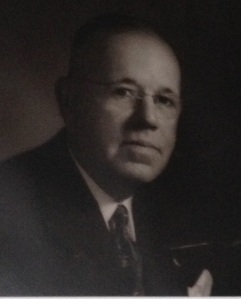 While this headline may say “Little Rock Look Back,” Lottie Shackelford is still very much focused on the present and the future!
While this headline may say “Little Rock Look Back,” Lottie Shackelford is still very much focused on the present and the future!
On April 30, 1941, future Little Rock Mayor Lottie Shackelford was born. Throughout her career in public service she has been a trailblazer.
Active in community activities and politics, she ran for the City Board in 1974 and lost. But she was appointed to the Little Rock City Board in September 1978 to fill a vacancy. This made her the first African American woman to serve on he City Board, and indeed on any governing board for the City (during Reconstruction, there were at least three African Americans on the City Council, but they were all men.) She was subsequently elected to a full-term on the City Board in 1980 winning 55% of the vote over three male candidates.
She was subsequently re-elected in 1984 (unopposed) and in 1988 (with 60% of the vote).
In January 1987, Shackelford became the first female mayor of Little Rock when she was chosen by her colleagues on the City Board to serve in that position. She was Mayor until December 1988.
From 1982 until 1992, she served as Executive Director of the Arkansas Regional Minority Purchasing Council. She left that position to serve as Deputy Campaign Manager of Clinton for President. She subsequently served on the Clinton/Gore transition team. She later served on the Overseas Private Investment Corporation from 1993 to 2003. She was the first African American to be in that position.
A graduate of Philander Smith College, she has also studied at the Arkansas Institute of Politics at Hendrix College and the Kennedy School of Government at Harvard University.
Mayor Shackelford has also served on numerous boards including the Little Rock Airport Commission, Philander Smith College, Chapman Funds (Maryland) and Medicis Pharmaceutical Corporation (Arizona). She has been the longest serving Vice-Chair of the Democratic National Committee.
Mayor Shackelford was in the first class of inductees for the Arkansas Black Hall of Fame. In 2015, she was inducted into the Arkansas Civil Rights Heritage Trail.

 On April 28, 1758, future U.S. President James Monroe was born in Virginia. It was during his Presidency that Arkansas was surveyed and platted. Little Rock was also officially settled during the Monroe Presidency. The Quapaw Line was drawn during his presidency. This document was the first official document to use the name “Little Rock” to describe this settlement.
On April 28, 1758, future U.S. President James Monroe was born in Virginia. It was during his Presidency that Arkansas was surveyed and platted. Little Rock was also officially settled during the Monroe Presidency. The Quapaw Line was drawn during his presidency. This document was the first official document to use the name “Little Rock” to describe this settlement. On April 28, 1784, in Virginia, future Little Rock Alderman (and acting Mayor) Major Nicholas Peay was born the eleventh of at least thirteen children. (His gravestone lists a May date for his birth, but all other records indicate April 28, 1784.) A veteran of the War of 1812 and the Indian Wars, he later moved to Kentucky (where he met and married his wife, Juliet Neill, in 1814) before settling in Arkansas on September 18, 1825. At the time, they were the ninth family to set up residence in Little Rock.
On April 28, 1784, in Virginia, future Little Rock Alderman (and acting Mayor) Major Nicholas Peay was born the eleventh of at least thirteen children. (His gravestone lists a May date for his birth, but all other records indicate April 28, 1784.) A veteran of the War of 1812 and the Indian Wars, he later moved to Kentucky (where he met and married his wife, Juliet Neill, in 1814) before settling in Arkansas on September 18, 1825. At the time, they were the ninth family to set up residence in Little Rock. On April 28, 1883, future Little Rock Mayor Sam M. Wassell was born. His grandfather John W. Wassell had been appointed Mayor of Little Rock in 1868. He is the only Little Rock Mayor to be a grandson of another Little Rock Mayor.
On April 28, 1883, future Little Rock Mayor Sam M. Wassell was born. His grandfather John W. Wassell had been appointed Mayor of Little Rock in 1868. He is the only Little Rock Mayor to be a grandson of another Little Rock Mayor. April 23, 1892, marked the beginning of the City of Little Rock’s public park system. On that date, the City officially took possession of land which would become what is now known as MacArthur Park.
April 23, 1892, marked the beginning of the City of Little Rock’s public park system. On that date, the City officially took possession of land which would become what is now known as MacArthur Park. Stephen Shachtman was named as the recipient of a $60,000 commission on Sunday at the conclusion of the 2017 Sculpture at the River Market. His sixteen foot sculpture composed of CorTen steel, bronze and slate is entitled “A.” It will be placed at the Southwest Community Center (6401 West Baseline Road) in 2018.
Stephen Shachtman was named as the recipient of a $60,000 commission on Sunday at the conclusion of the 2017 Sculpture at the River Market. His sixteen foot sculpture composed of CorTen steel, bronze and slate is entitled “A.” It will be placed at the Southwest Community Center (6401 West Baseline Road) in 2018.
